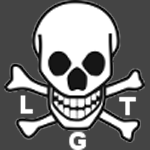Unveiling the Secrets of LTG Forensic Drug Analysis
LTG forensic drug analysis is an essential component in the realm of forensic science, providing critical insights into drug-related incidents and legal matters. This sophisticated analytical process allows experts to identify, quantify, and characterize drugs found at crime scenes or within biological specimens. Understanding LTG forensic drug analysis not only aids law enforcement agencies but also empowers legal professionals and social services to address the challenges posed by substance abuse.
The Foundation of LTG Forensic Drug Analysis

Before diving into the intricate methodologies and applications of LTG forensic drug analysis, it is vital to establish a foundational understanding of what this process entails. At its core, forensic drug analysis involves the scientific examination of substances for their chemical composition and potential effects on humans. LTG, or “Liquid Chromatography with Tandem Mass Spectrometry,” is one prevalent technique employed in this domain.
Historical Context
The evolution of forensic drug analysis has been gradual, tracing back to the early methods of identification that relied heavily on chemical reactions. As technology advanced, so did the techniques used in forensic settings.
In the late 20th century, the introduction of chromatographic and spectrometric techniques revolutionized drug testing. These methods enabled more accurate identifications of substances, significantly reducing the margin for error.
Today, LTG forensic drug analysis stands at the forefront of these advancements, providing unparalleled precision and versatility in identifying both common and obscure drugs.
Importance in Legal Contexts
LTG forensic drug analysis plays a pivotal role in legal proceedings. The results derived from such analyses are crucial in various scenarios, including criminal prosecutions, custody battles, and cases involving wrongful convictions.
A robust forensic report can be the difference between conviction and acquittal, making the reliability of the analytical process paramount. Furthermore, as society grapples with the complex issues surrounding drug use and trafficking, LTG forensic drug analysis serves as a key tool in combating these challenges.
Technological Advancements
Modern forensic laboratories have increasingly adopted cutting-edge technologies to enhance their analytical capabilities. The integration of artificial intelligence and machine learning into LTG forensic drug analysis processes promises to streamline workflows and improve accuracy.
These advancements enable forensic scientists to analyze larger samples in shorter timeframes, thereby expediting the overall investigative process. Moreover, they allow for the detection of new synthetic drugs that may not have existed in previous databases, ensuring that forensic practices remain relevant in an ever-evolving landscape.
Methodologies Primarily Used in LTG Forensic Drug Analysis
Delving deeper into LTG forensic drug analysis necessitates an exploration of the methodologies that underpin this sophisticated practice. Various techniques, each with its own advantages and limitations, come into play during the analytical process.
Liquid Chromatography Fundamentals
Liquid chromatography forms the backbone of LTG forensic drug analysis and is instrumental in separating complex mixtures into their individual components.
Using a mobile phase to carry the analytes through a stationary phase, liquid chromatography relies on differential solubility and adsorption characteristics. This separation is critical for identifying specific substances present in a sample.
Furthermore, variations of liquid chromatography, such as high-performance liquid chromatography (HPLC) and ultra-high-performance liquid chromatography (UHPLC), enhance resolution and speed, allowing forensic analysts to work efficiently with diverse samples.
Tandem Mass Spectrometry Applications
Tandem mass spectrometry complements liquid chromatography by providing qualitative and quantitative data regarding separated compounds.
This powerful technique involves ionizing chemical species and sorting them based on their mass-to-charge ratio. By conducting multiple rounds of mass spectrometry, analysts can glean extensive information about the chemical structure and concentration of an identified substance.
Crucially, tandem mass spectrometry significantly increases sensitivity, enabling the detection of trace amounts of drugs that might otherwise go unnoticed. This characteristic is particularly beneficial when working with biological samples, such as blood or urine, which often contain low drug concentrations.
Interpretation of Results
Interpreting results from LTG forensic drug analysis requires a nuanced understanding of toxicology and pharmacology. Analysts must consider the context in which a substance was found, its potential interactions with other drugs or medications, and its effect on human physiology.
Beyond mere identification, this interpretation also incorporates assessing the implications of drug presence—especially concerning impairment, overdose risk, and potential legal consequences. Thus, effective communication of results is paramount, as they must be presented clearly for stakeholders, including law enforcement and the judiciary.
The Role of LTG Forensic Drug Analysis in Public Health and Safety
The implications of LTG forensic drug analysis extend beyond the courtroom and into public health initiatives. By monitoring drug trends and identifying emerging substances, forensic analysis plays a seminal role in safeguarding communities.
Monitoring Substance Abuse Trends
Forensic laboratories that engage in LTG forensic drug analysis contribute to understanding substance use patterns within populations.
Data compiled from drug testing can reveal alarming trends regarding specific substances, such as opioids or synthetic cannabinoids. Such information is invaluable for public health officials aiming to implement preventive measures, allocate resources effectively, and tailor educational campaigns to target communities most affected by drug misuse.
By acting on these trends, public health initiatives can better mitigate risks associated with substance abuse and promote healthier environments.
Supporting Harm Reduction Strategies
In recent years, there has been growing recognition of harm reduction strategies as a pragmatic approach to addressing substance use disorders. LTG forensic drug analysis aids these efforts by providing valuable insights into drug composition and potency, enabling healthcare providers to educate users about safer practices.
For example, understanding the presence of dangerous adulterants in street drugs can empower users to make informed decisions and reduce the likelihood of overdose.
Furthermore, forensic analysis can help identify which substances are prevalent in a given area, guiding the development of targeted interventions and support services tailored to local populations.
Collaboration with Law Enforcement
Collaboration between public health entities and law enforcement agencies is essential for holistic drug policy reform. LTG forensic drug analysis fosters this partnership by offering empirical data to shape enforcement strategies.
Law enforcement can utilize findings from forensic analyses to focus efforts on high-risk areas or communities, prioritizing resources accordingly. This synergy enhances the effectiveness of drug control measures while simultaneously addressing public health concerns.
Ethical Considerations in LTG Forensic Drug Analysis
The intersection of forensic science, law, and ethics presents unique challenges, particularly in the context of LTG forensic drug analysis. Navigating these ethical waters requires careful consideration of numerous factors.
Ensuring Data Integrity
One of the foremost ethical considerations in forensic drug analysis is maintaining the integrity of data. Analysts must adhere to strict protocols to avoid contamination or misinterpretation of samples.
Additionally, transparency in documenting procedures, methodologies, and findings is essential for upholding ethical standards. This vigilance ensures that the results of LTG forensic drug analysis remain credible and defensible in legal settings.
Addressing Bias in Analytical Practices
Bias, whether conscious or unconscious, can seep into forensic practices and compromise the objectivity of results. For instance, preconceived notions regarding certain substances or user demographics can influence how analysts interpret their findings.
To combat bias, continuous training and education are necessary for forensic professionals. Encouraging diversity within laboratories can also foster a broader perspective that minimizes the risk of biased interpretations.
Balancing Public Safety and Individual Rights
As forensic analysts work diligently to uncover the truth behind drug-related incidents, they must navigate the delicate balance between public safety and individual rights.
While analyzing substances can lead to the prosecution of criminals and potentially save lives, it is equally important to ensure that individuals’ rights to privacy are respected.
Forensic laboratories must operate within ethical frameworks that prioritize the responsible use of data and uphold the principles of justice. This commitment to ethical integrity ultimately strengthens public trust in forensic science and its applications.
FAQs
What is LTG forensic drug analysis?
LTG forensic drug analysis is a specialized analytical method that combines liquid chromatography and tandem mass spectrometry to identify and quantify drugs in various samples. This process is crucial for forensic investigations, legal proceedings, and public health initiatives.
How does LTG forensic drug analysis differ from traditional drug testing?
LTG forensic drug analysis offers enhanced precision and sensitivity compared to traditional drug testing methods. It allows for the identification of a wider range of substances, including emerging synthetic drugs, and provides detailed information about drug composition.
In what contexts is LTG forensic drug analysis used?
LTG forensic drug analysis is employed in a variety of contexts, including criminal investigations, toxicology reports, workplace drug testing, and public health monitoring. Its findings can impact legal decisions, rehabilitation programs, and drug policy reforms.
Can LTG forensic drug analysis detect new synthetic drugs?
Yes, LTG forensic drug analysis is well-suited to detect new synthetic drugs. The sensitivity of tandem mass spectrometry enables the identification of trace amounts of novel substances that may not be included in existing drug databases.
Why is ethical consideration vital in LTG forensic drug analysis?
Ethical considerations are crucial in LTG forensic drug analysis to ensure data integrity, address bias, and respect individual rights. Upholding ethical standards fosters public trust in forensic science and its role in society.
Conclusion
The field of LTG forensic drug analysis presents remarkable opportunities for investigative breakthroughs and enhanced public safety. As technological advancements continue to evolve, the potential applications of LTG forensic drug analysis expand further, aiding both law enforcement and public health initiatives. However, navigating ethical considerations remains paramount in ensuring the credibility and integrity of forensic practices. By embracing these responsibilities, we can harness the power of forensic science to create a safer and healthier society, tackling the complexities of substance use with knowledge, compassion, and diligence.
